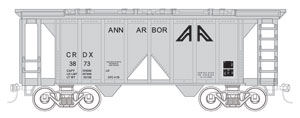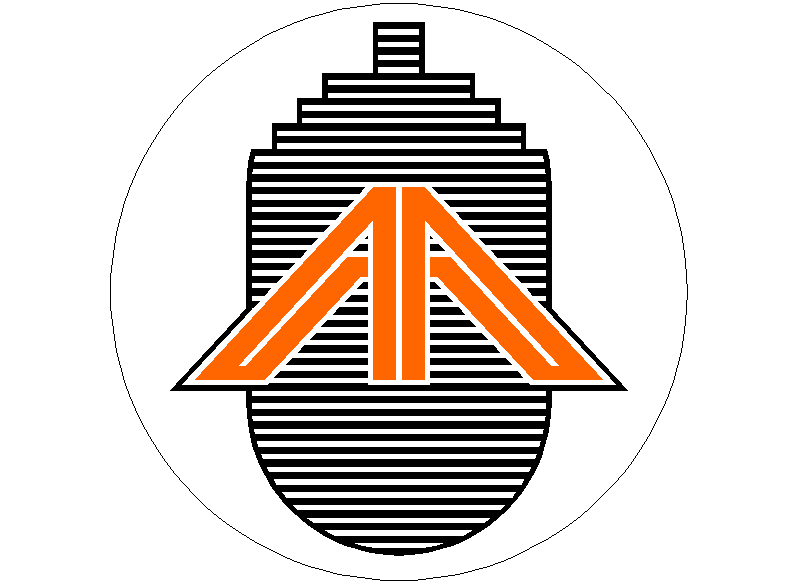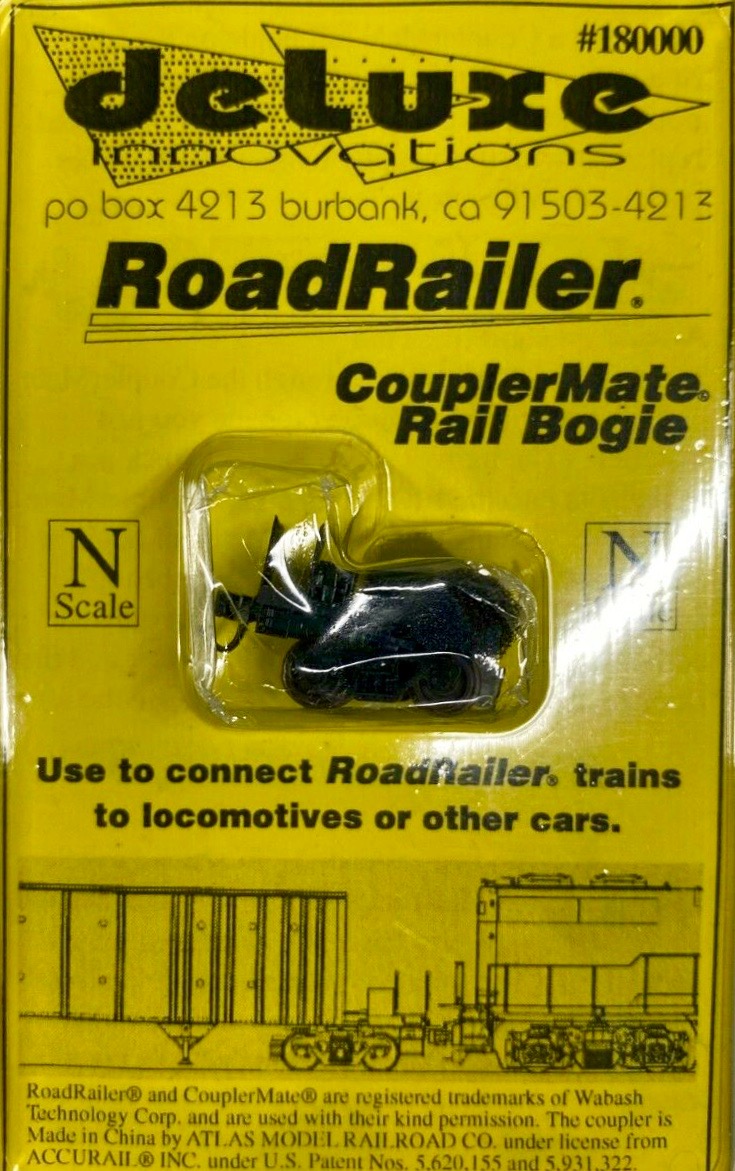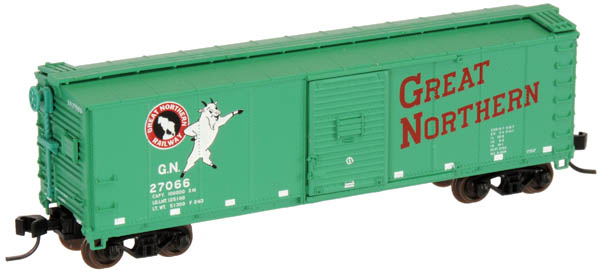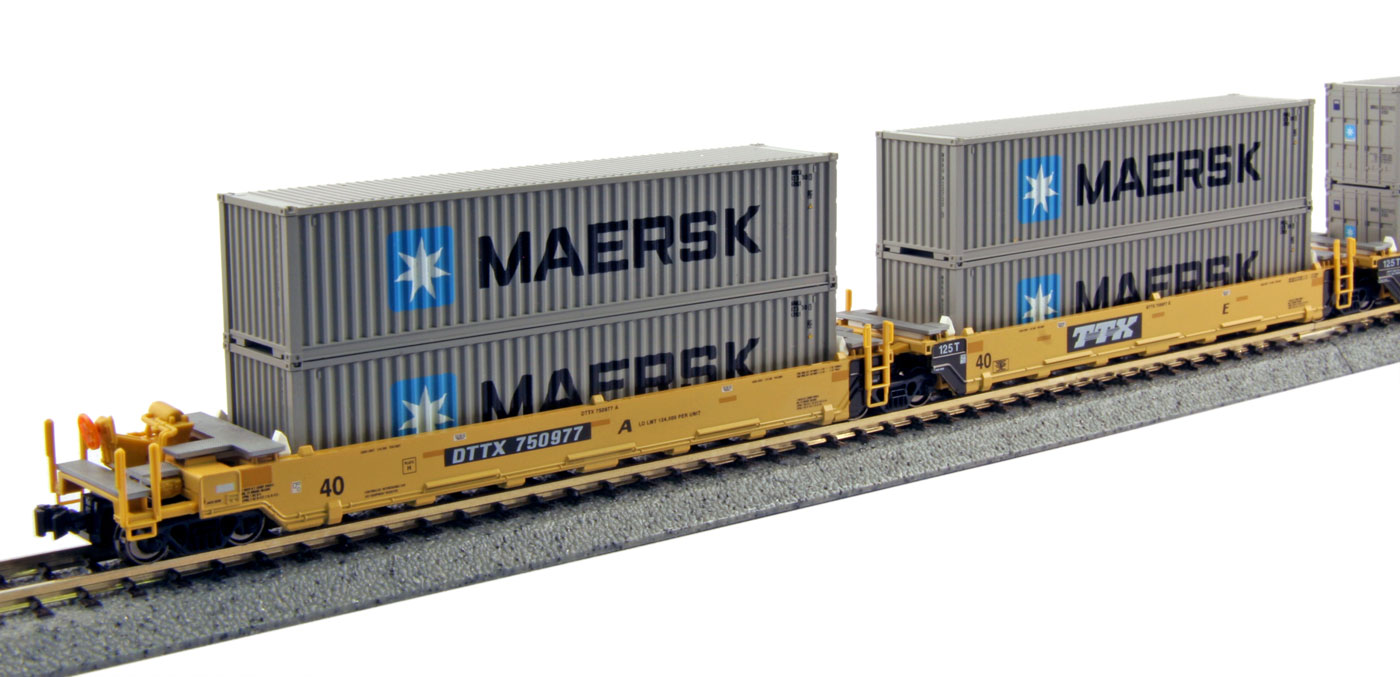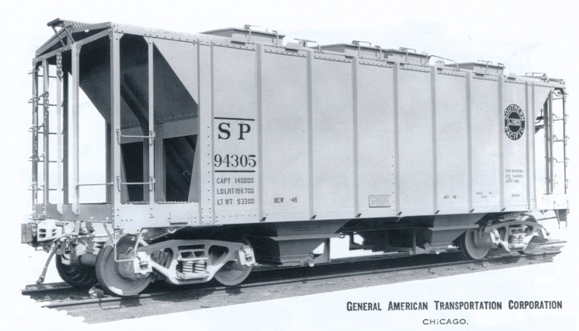Specific Item Information:
Model Information: This model was originally produced by V-Line. Deluxe Innovations later acquired the tooling. The deLuxe models of these common cars are weighted with the same copper slugs used in their box cars for superior tracking and immunity to magnetism.
Most releases feature more than one paint scheme variation within a road name. For instance, the Missouri Pacific set features cars delivered with MP reporting marks and painted "corrosion resistant gray" that is actually a tan color, and cars lettered for MoPac subsidiaries Missouri-Illinois and St. Louis Brownsville & Mexico (both carrying the traditional buzz saw logo) that are painted in a more traditional gray color. Some of the more modern paint schemes including Delaware & Hudson and National Bureau of Standards have the four-color ACI tags. ACI stands for Automated Car Identification and worked like a grocery store bar code reader using a color TV camera instead of a laser. Unfortunately, the tags couldn't be read if they were dirty and the system fell out of favor by the early 1980's. This aspect of 70's railroading is rarely modeled but we include it on appropriate cars.
Most releases feature more than one paint scheme variation within a road name. For instance, the Missouri Pacific set features cars delivered with MP reporting marks and painted "corrosion resistant gray" that is actually a tan color, and cars lettered for MoPac subsidiaries Missouri-Illinois and St. Louis Brownsville & Mexico (both carrying the traditional buzz saw logo) that are painted in a more traditional gray color. Some of the more modern paint schemes including Delaware & Hudson and National Bureau of Standards have the four-color ACI tags. ACI stands for Automated Car Identification and worked like a grocery store bar code reader using a color TV camera instead of a laser. Unfortunately, the tags couldn't be read if they were dirty and the system fell out of favor by the early 1980's. This aspect of 70's railroading is rarely modeled but we include it on appropriate cars.
Prototype History: This design had a life span that is truly enormous. The last cars of this design were built in the 1960's -- three decades after the first cars were built for Santa Fe. Quite a few of these cars are still in service. Because you have to stand on the roof in order to open the hatches, these cars were immune from the "No Roof Walk" rule of 1964, but a number would be scrapped when friction bearing trucks were outlawed. Amazingly, some cars are now being retired because they have hit the Federal Railroad Administration's 50 year rule!
Originally designed at the height of the Great Depression, the first ten cars of this design were delivered to Santa Fe in an austere black paint scheme. Covered hoppers have always been used for any bulk cargo that had to be protected from the elements. Some have the impression that covered hoppers are used mostly for grain. Nothing can be further from the truth. In fact, moving grain in covered hoppers has only been commonplace since the 1960's. Before that period, most grain moved in 40' box cars with grain doors temporarily nailed over the doorways. In the steam era, covered hoppers were used for cement, sand, clay, talc, and other powders. The cargo was loaded through eight square hatches in the roof. To empty the car, the hatches at the bottom are opened and the load spills out. At this point, some low man on the company ladder would have to climb into the car with a broom and sweep out the corners and the center sill. The American Car & Foundry covered hopper design was such a success that it became a defacto standard for years. Even Pullman Standard (ACF's arch enemy) built cars to the same design. The distinctive open triangles in the sides make these cars easily distinguishable even from a distance. ACF would also develop a version without the open triangles which was not as prolific as the version presented here. Amazingly, many of these cars are still in use today, in MOW and lineside service. Many have been rebuilt as ballast hoppers, including for SP, CSX, Amtrak, and Santa Fe.
Originally designed at the height of the Great Depression, the first ten cars of this design were delivered to Santa Fe in an austere black paint scheme. Covered hoppers have always been used for any bulk cargo that had to be protected from the elements. Some have the impression that covered hoppers are used mostly for grain. Nothing can be further from the truth. In fact, moving grain in covered hoppers has only been commonplace since the 1960's. Before that period, most grain moved in 40' box cars with grain doors temporarily nailed over the doorways. In the steam era, covered hoppers were used for cement, sand, clay, talc, and other powders. The cargo was loaded through eight square hatches in the roof. To empty the car, the hatches at the bottom are opened and the load spills out. At this point, some low man on the company ladder would have to climb into the car with a broom and sweep out the corners and the center sill. The American Car & Foundry covered hopper design was such a success that it became a defacto standard for years. Even Pullman Standard (ACF's arch enemy) built cars to the same design. The distinctive open triangles in the sides make these cars easily distinguishable even from a distance. ACF would also develop a version without the open triangles which was not as prolific as the version presented here. Amazingly, many of these cars are still in use today, in MOW and lineside service. Many have been rebuilt as ballast hoppers, including for SP, CSX, Amtrak, and Santa Fe.
Road Name History: Ann Arbor was formed in 1895 to reorganize the bankrupt Toledo Ann Arbor & North Michigan. It ran from Toledo, Ohio through Ann Arbor, Michigan northwest to the coast of Lake Michigan at Frankfort. There, railroad car ferries forwarded the traffic to four ports across the lake. The rail portion was almost exactly 300 miles. Detroit Toledo & Ironton had control of the company between 1905 and 1910. In 1925, the Wabash took control of the Ann Arbor. As diesels began to arrive (mostly Alco FA's and RS1s) they came in Wabash blue, gray and white but with Ann Arbor lettering and a "marine" version of the flag on the nose. This is where it gets a bit complicated.
Wabash was controlled by the Pennsylvania Railroad who, in the early 60s, was planning their merger with the New York Central. They knew they would not be permitted to control Wabash through the merger and began arranging marriages to limit any negative impacts. They arranged for Wabash (whom they controlled) to be leased by Norfolk & Western (whom they didn't control but had considerable influence over) as part of N&W’s consolidation with Nickel Plate, Akron Canton & Youngstown, and Pittsburgh & West Virginia. For some reason, Ann Arbor was to stay in the PRR sphere and not go with the Wabash. So prior to that merger, Wabash sold the Ann Arbor to the Detroit Toledo & Ironton (whom PRR also controlled.) That was in 1963. At that point, AA traded in their blue, gray and white for DT&I orange with Ann Arbor lettering. As the 60s pressed on, demand for cross-lake ferry rail service dwindled until only the two Wisconsin routes remained. By 1972, AA was down to 15 locomotives. A year later, they declared bankruptcy. The line operated in receivership until April 1, 1976 which was Conrail's first day of operation. After a short time, Conrail announced that it wasn't interested in operating any AA route north of Ann Arbor, but the state of Michigan wanted to keep the road together. So Michigan Interstate took over as the designated operator of the Ann Arbor Railroad. “Michigan Interstate Railway Company Operator” lettering was applied to the short hoods of many AA locomotives. In 1982, all ferry operations ended and the following year AA was split between the Michigan Interstate, the Michigan Northern and the Tuscola & Saginaw Bay (later the Great Lakes Central.) Then in 1988, a new company bought the section from Toledo to Ann Arbor. That is the current "Ann Arbor Railroad." Ann Arbor joined the Watco shortline group in 2013.
The Ann Arbor Railroad owned a subsidiary, the Manistique and Lake Superior Railroad (M&LS), from somewhere shortly after that line's origin in 1909 until it was abandoned in 1968.
The Ann Arbor Railroad owned a subsidiary, the Manistique and Lake Superior Railroad (M&LS), from somewhere shortly after that line's origin in 1909 until it was abandoned in 1968.
Brand/Importer Information: DeLuxe Innovations is a "wholesale manufacturer" of model trains. We manufacture scale replica train models and sell them to hobby shops and distributors worldwide. 2013 marked the 20 year anniversary of DeLuxe Innovations brand trains. There are over 25 body styles in our product line and all of the cars in our single and multi-car packs have different road numbers. DeLuxe Innovations, Inc. is owned by Dave Ferrari, founder of Squeak N Products. We are located in Midland Park, New Jersey. When Dave purchased the business it was located in Burbank, California which would have been a bit of a long commute so the move to the East Coast was planned. Our first East Coast location was in Whippany, NJ along the Whippany River.
The business was started in 1993 by George Johnsen and Roberta Liebreich in Burbank, California. They had a philosophy that just wouldn't allow using a coal car as a "stand in" for a woodchip car, or printing any and all boxcar paint schemes on a PS-1. Starting with the release of the first ever etched metal parts for a ready to run car (1994's Twinstack's metal walkways) through the full dimension underframe and etched metal roofwalk (1996's 1944 AAR Boxcar) to the challenging RoadRailer system (2000), our products have been accurate to target the modeler or enthusiast.
You can also follow DeLuxe on Twitter
The business was started in 1993 by George Johnsen and Roberta Liebreich in Burbank, California. They had a philosophy that just wouldn't allow using a coal car as a "stand in" for a woodchip car, or printing any and all boxcar paint schemes on a PS-1. Starting with the release of the first ever etched metal parts for a ready to run car (1994's Twinstack's metal walkways) through the full dimension underframe and etched metal roofwalk (1996's 1944 AAR Boxcar) to the challenging RoadRailer system (2000), our products have been accurate to target the modeler or enthusiast.
You can also follow DeLuxe on Twitter
Item created by: Powderman on 2018-12-23 11:41:24. Last edited by Alain LM on 2020-06-06 12:07:10
If you see errors or missing data in this entry, please feel free to log in and edit it. Anyone with a Gmail account can log in instantly.
If you see errors or missing data in this entry, please feel free to log in and edit it. Anyone with a Gmail account can log in instantly.


